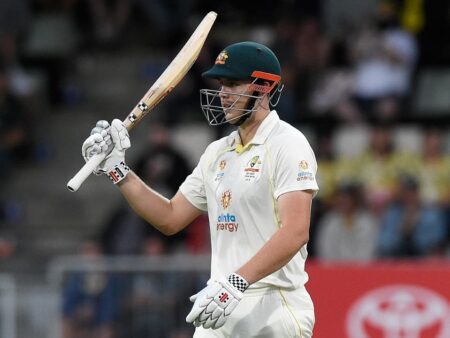
Cricket, in its purest Test match form, is a gruelling contest of skill, stamina, and resilience. For five days, players push their bodies to the limit, often battling not just the opposition, but also the inevitable wear and tear that comes with elite sport. An injury can shatter a team`s balance, leaving them a player short and often dictating the flow of the game – a scenario long accepted as part of cricket`s unyielding charm. However, the winds of change are blowing, and Cricket Australia (CA) is leading the charge with an innovative trial that could redefine the very fabric of red-ball cricket.

The sight of a player leaving the field due to injury is all too common, highlighting the physical demands of the game.
Addressing the Age-Old Dilemma: Player Welfare Meets Competitive Fairness
The issue of in-match injury replacements isn`t new. Recent high-profile incidents, such as Rishabh Pant`s fractured foot or Chris Woakes` dislocated shoulder in Test matches, have reignited debates about player welfare and competitive equity. When a frontline bowler or a crucial batter is sidelined mid-game, the entire team dynamic shifts. Bowlers might be overworked, leading to further injuries, or a batting lineup might become critically exposed. The International Cricket Council (ICC) has opened the door for domestic competitions to experiment, and CA has seized the opportunity to craft a model that is both progressive and meticulously thought out.
Unlike some other models, which focus solely on “serious” or “external” injuries, CA`s trial in the Sheffield Shield aims for a comprehensive approach. This isn`t just about preventing deep cuts or fractures from leaving a team reeling; it’s about acknowledging any injury or illness that genuinely incapacitates a player. The goal is to prevent undue strain on the remaining fit players and ensure the competitive balance of the contest isn`t irrevocably tilted by misfortune.
The Tactical Twist: A Chess Match Within Cricket
What sets Cricket Australia’s trial apart, making it arguably the most intriguing and forward-thinking yet, is its ingenious “tactical twist.” Here`s how it works:
- If a team loses a player to injury or illness (any type), they can request a like-for-like replacement (e.g., a fast bowler for a fast bowler, a batter for a batter).
- This substitution is permissible up until stumps on Day 2 of the match.
- The real masterstroke? If one team makes an injury replacement, the opposition is then also permitted to make a corresponding `tactical substitute` of the same player type by the close of Day 2.
Imagine the scenario: Your opposition`s key quick bowler hobbles off injured, replaced by another fiery paceman. You, as captain, now have a fascinating decision to make. Do you use your tactical substitute to bring in a fresher, faster bowler to match their newfound energy? Or perhaps you`ve realized your opening batter is struggling against the new ball and the opportunity arises to swap them for a more in-form specialist. Just when you thought Test cricket captaincy wasn`t complicated enough, CA has added another layer to the strategic chessboard!
“The tactical substitution element introduces a fascinating dynamic. It’s no longer just about mitigating bad luck; it’s about seizing an opportunity, turning a potential disadvantage into a strategic play. Captains will have to be sharper than ever.”
This mechanism is designed to mitigate potential manipulation while fostering a truly balanced contest. The match referee plays a crucial role here, approving the legitimacy of injuries and ensuring replacements are indeed “like-for-like.” They can even impose restrictions, for example, preventing a replacement batter from bowling if the original player never did.
Safeguards and Practicalities: Keeping the Game Honest
CA has considered the finer details to maintain the integrity of the game. An injured player replaced under this rule faces a mandatory 12-day non-playing period, starting from the second day of the match they were subbed out of. This ensures players aren`t rushed back prematurely and prevents any cynical rotation of players for strategic advantage.
From a logistical standpoint, teams will generally travel with 12 players, though Western Australia (due to travel distances) and teams playing them will have a squad of 13. CA has encouraged states to include a spare fast bowler as their 12th man, recognizing that fast bowlers, statistically, are the most frequent injury casualties.
A Glimpse into the Future of Test Cricket?
This trial, spanning the first five rounds of the Sheffield Shield, is more than just a domestic experiment. It`s a living laboratory, generating invaluable data and feedback for Cricket Australia to present to the ICC. As discussions about injury substitutions continue at the international level, Australia`s bold, comprehensive, and tactically nuanced approach could well serve as a blueprint for the future of Test cricket.
Will this new rule lead to more dynamic matches, better player protection, and an even richer tactical game? Or will it introduce unforeseen complexities? Only time, and the upcoming Sheffield Shield season, will tell. But one thing is clear: Australian cricket is once again at the forefront of innovation, daring to challenge conventions to evolve the timeless game.





